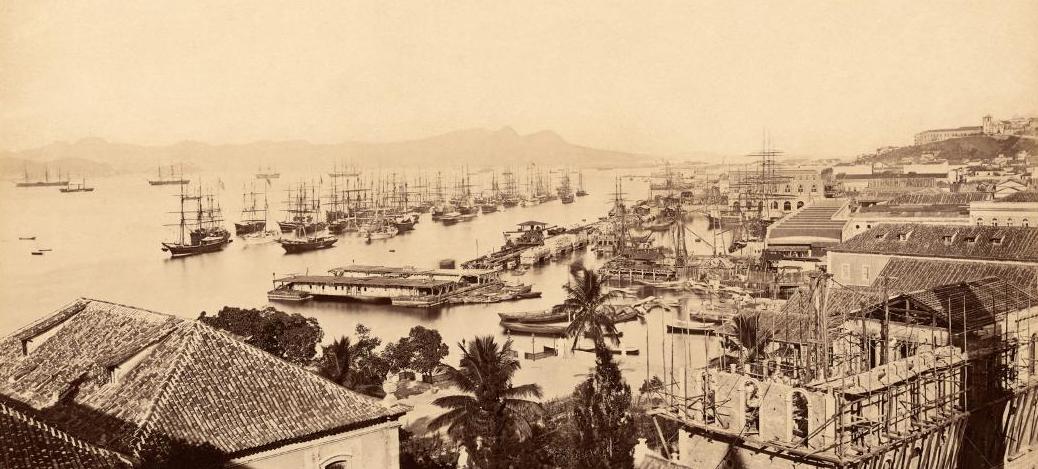Music and Silence in the Armenian Diaspora
Episode 461
Music, at its best, can give us a reason to live. In this episode, Sylvia Alajaji discusses how in the wake of the Armenian Genocide, music not only served this function for Armenians, but also opened up broader questions about how to define what it meant to be Armenian. Drawing from her book Music and the Armenian Diaspora, she traces the Armenian musical cultures that emerged over a century from New York to Beirut to California. On one hand, the diaspora sought to preserve the folk music of Ottoman Armenian communities destroyed and scattered throughout the First World War and its aftermath. Meanwhile, in new homes like Beirut, Armenian artists began to create new musical forms in which the use of Armenian language was more crucial than the particularities of music style. At the same time, the memory of Ottoman Armenian music in the Turkish language that arrived in places like the United States with the first waves of migrant began to fade as the Armenian diaspora grew more distant from its origins in what is modern Turkey. For Alajaji these acts of preservation, creation, erasure, and recovery all are part of what music means to the Armenian diaspora.
 | Click for RSS Feed | 
|

|
Contributor Bios
 |
Sylvia Angelique Alajaji is an Associate Professor and Chair of Music at Franklin & Marshall College, where she also teaches in the International Studies program. She is the author of Music and the Armenian Diaspora: Searching for Home in Exile, a multi-sited work that examines the construction of diasporic Armenian subjectivity in the years since the Armenian genocide (recently published in Turkish translation). Her published work centers on the relationship between music and exilic identity, focusing primarily on Armenian diasporic communities in Lebanon and the United States. In the fall of 2020, she will serve as the Dumanian Visiting Professor of Armenian Studies at the University of Chicago. |
 |
Sam Dolbee is a postdoctoral fellow in the Program in Agrarian Studies at Yale University. His research is on the environmental history of the Jazira region in the late nineteenth and early twentieth century. |
Credits
Episode No. 461
Release Date: 23 April 2020
Recording Location: Lancaster, PA
Special thanks to Seçil Yılmaz
Audio editing by Sam Dolbee and Chris Gratien
Music: Adiss Harmandian, "Karoun Karoun"; Zé Trigueiros, "Petite Route"; Haig Ohanian, "Bayati II"; Achilleas Poulos, "Neden Geldim Amerika'ya"
Bibliography and links courtesy of Sylvia Alajaji
Release Date: 23 April 2020
Recording Location: Lancaster, PA
Special thanks to Seçil Yılmaz
Audio editing by Sam Dolbee and Chris Gratien
Music: Adiss Harmandian, "Karoun Karoun"; Zé Trigueiros, "Petite Route"; Haig Ohanian, "Bayati II"; Achilleas Poulos, "Neden Geldim Amerika'ya"
Bibliography and links courtesy of Sylvia Alajaji
Select Sources on Armenian Music and Identity

Adriaans, Rik. 2018. “Of Oligarchs, Orientalists and Cosmopolitans: How ‘Armenian’ is Rabiz
Music?” Nationalities Papers 46(4): 704-716.
Alajaji, Sylvia Angelique. Music and the Armenian Diaspora: Searching for Home in Exile. Bloomington, IN: Indiana University Press, 2015.
Artinian, Roubina. 2009. “Armenian Choirs in Lebanon, 1930-1980: A Bridge between the Past and the Present.” In Armenians of Lebanon: From Past Princesses and Refugees to Present-Day Community, edited by Aïda Boudjikanian, 133-151. Beirut: Haigazian Univ. and Armenian Heritage Press.
Bilal, Melissa. 2018. “Lullabies and the Memory of Pain: Armenian Women’s Remembrance of the Past in Turkey.” Dialectical Anthropology 43(3): 185-206.
Bilal, Melissa and Burcu Yıldız. 2019. Kalbim o viran evlere benzer: Gomidas Vartabed’in müzik mirası. Istanbul: Birzamanlar Yayıncılık.
Kassabian, Anahid. 2013. Ubiquitous Listening: Affect, Attention, and Distributed Subjectivity. Berkeley: University of California Press.
Komitas Vartapet. 1998. Armenian Sacred and Folk Music. Translated by Edward Gulbenkian. Surrey, UK: Curzon Press.
Kuyumjian, Rita Soulahian. 2001. The Archeology of Madness: Komitas, Portrait of an Armenian Icon. Princeton, NJ: Gomidas Institute.
Lind-Sinanian, Gary, and Susan Lind-Sinanian. 1978. Dance Armenian: A Collection of Armenian Dances as Danced at Contemporary American-Armenian Parties. Lexington, MA: Folk Arts Center of New England.
Mathias, Alyssa. 2015. “‘They Were Sent to Their Deaths From Here:’ Sounds of Plurality and Solidarity in Istanbul at the 100th Anniversary of the Armenian Genocide.” Ethnomusicology Review. https://www.ethnomusicologyreview.ucla.edu/content/they-were-sent-their-deaths-here.
McCollum, Jonathan. 2004. “Music, Ritual, and Diasporic Identity: A Case Study of the Armenian Apostolic Church.” PhD diss., University of Maryland.
McCollum, Jonathan, and Andy Nercessian. 2004. Armenian Music: A Comprehensive Bibliography and Discography. Lanham, MD: Scarecrow Press.
Sarkissian, Margaret. 1990. “The Politics of Music: Armenian Community Choirs in Toronto.” In Ethnomusicology in Canada: Proceedings of the First Conference on Ethnomusicology in Canada Held in Toronto 13-15 May, 1988, ed. R. Witmer, 98-104. CanMus Documents. Toronto: Institute for Canadian Music.
Shahmelikian, Boghos. 2012. Memories of Bygone Days, 2nd ed. San Fernando: Hamazkayin Baruyr Sevag Chapter.
Yıldız, Burcu. 2017. Experiencing Armenian Music in Turkey: An Ethnography of Musicultural Memory. Würzburg: Ergon Verlag, 201
Referenced Recordings
Armenians on 8th Avenue. 1996. Documentation by Harold G. Hagopian. Traditional Crossroads CD 4279.
Cowell, Sidney Robertson. California Gold: Northern California Folk Music from the Thirties.
From Library of Congress: https://www.loc.gov/collections/sidney-robertson-cowell-
northern-california-folk-music/about-this-collection/.
Kef Time Band. (1986) 1994. Kef Time: Exciting Sounds of the Middle East. Documentation by Harold Hagopian. Traditional Crossroads CD 4269.
To What Strange Place: The Music of the Ottoman-American Diaspora, 1916–1929. Various
artists. Curated and compiled by Ian Nagoski. San Francisco: Tompkins Square, 2011.
Yerkaran: Arrangements for Armenian, Kurdish, and Turkish Songs Collected by Gomidas Vartabed. 2014. Kalan Müzik Yapım Limited Şirketi.
Music Links
“Nune,” Adiss.
“Groong,” Komitas (perf. by Isabel Bayrakdarian).
“Groong,” Komitas (perf. by Zabelle Panosian).
“Karoun, Karoun,” Adiss.
“Soode, Soode,” Kef Time Band.
“Havadamk,” Onnik Dinkjian and Ara Dinkjian.
“Yandım Tokat Yandım,” Sugar Mary Vartanian.











Comments
Post a Comment
Due to an overwhelming amount of spam, we no longer read comments submitted to the blog.